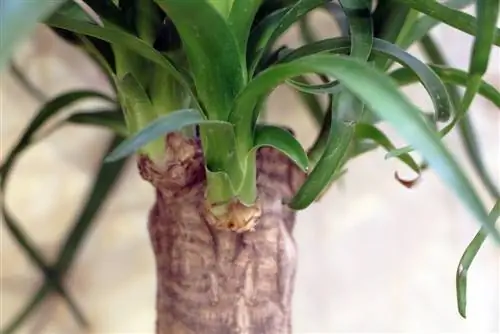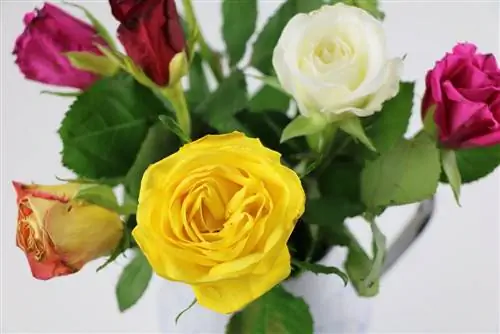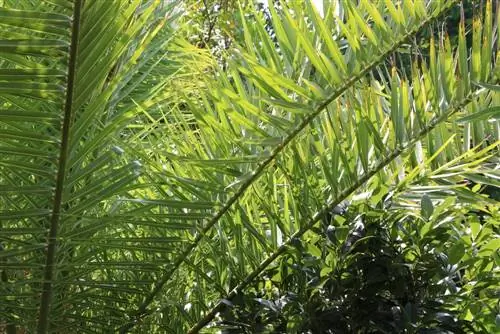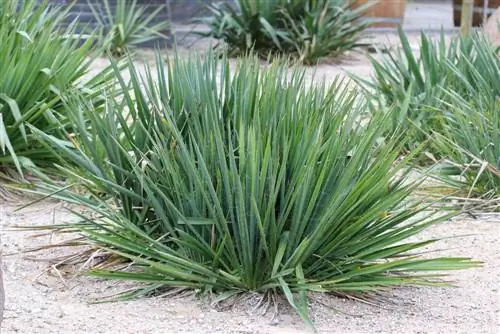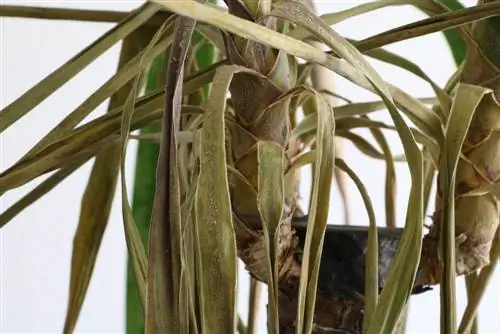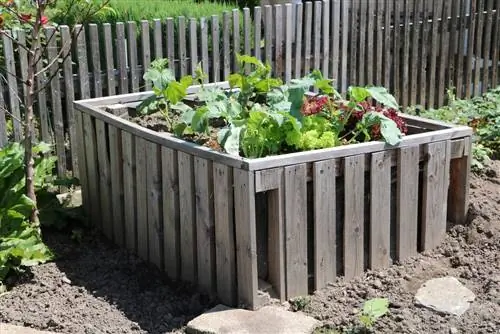- Author admin [email protected].
- Public 2023-12-17 03:39.
- Last modified 2025-01-24 12:45.
Yuccas are incredibly popular in German apartments. Of the more than 50 species that exist worldwide, the Yucca elephantipes is particularly found here. It is, so to speak, the epitome of what is generally understood by a yucca palm. Its big advantage: It is very robust and easy to care for. So it doesn't require a lot of attention or a lot of gardening experience. However, their needs change somewhat throughout the year. If you want to do something good for your plant, you should focus on these needs and also adapt the respective location.
The fundamental location question
The classic yucca palm is a houseplant. Under certain conditions it can be left outdoors during the summer months, but cannot be cultivated there. It almost goes without saying that certain location factors must also be met in the home so that the plant feels comfortable and thrives. The following applies: the more ideal the location, the less maintenance required. So what does the perfect yucca location look like? Well, it should be sunny, warm and protected from drafts. The location can and should change with the changing seasons. Basically, three phases can be distinguished:
- The summer months
- The winter phase
- The rest of the year
The Yucca palm spends most of the year in a sunny location in the apartment, without being in the blazing sun. Fresh air through regular ventilation is important, but it shouldn't be drafty. Basically, the plant likes it very warm because of its origins in the semi-desert areas of South America. If a location meets these conditions and the yucca is watered and fertilized regularly, it will feel comfortable there and thrive.
Location in the summer months
In the summer, the yucca can and should go outdoors. It doesn't matter whether you put it on the balcony, the terrace or directly in the garden. The fresh air and natural warmth promote the growth of the plant and ensure more lushness. Of course, a few points should be taken into account. Again, it has to be warm. As a rule, in our latitudes you will only be able to use the months of June, July and August to treat Yucca elephantipes to a trip into the countryside.
An average temperature of 20 degrees Celsius should definitely be achieved. If the summer is rather wet and cold, the plant must stay indoors. It is important that it is protected from drafts outside and protected from moisture. Although it is possible to place the yucca directly in the blazing sun, it must first be gradually accustomed to the stronger sunlight in order to avoid “burning” the leaves. The classic yucca palm should definitely remain in its planter. It also needs to be watered regularly and fertilized with liquid fertilizer every two weeks.
Tip:
There are also hardy yucca plants that remain outdoors all year round and can also be planted in the ground. These include, for example: Yucca filamentosa, Yucca glauca, Yucca baccata or Yucca gloriosa.
Location during the winter months
During the winter months, the Yucca elephantipes takes a break. The heated living room is therefore anything but a good location for them. She now prefers temperatures between five and ten degrees Celsius. Logically, this requires an unheated room. At the same time, it must also provide enough sunlight. And a regular supply of fresh air is also essential. The plant also needs to be watered regularly.
However, she now needs significantly less fluid. You should therefore be careful not to give it too much water. Otherwise, waterlogging will occur and the roots in particular can begin to rot. Fertilization is completely avoided. In this phase the plant does not need any nutrients. The yucca palm is usually overwintered from November to March - depending on the actual temperatures.
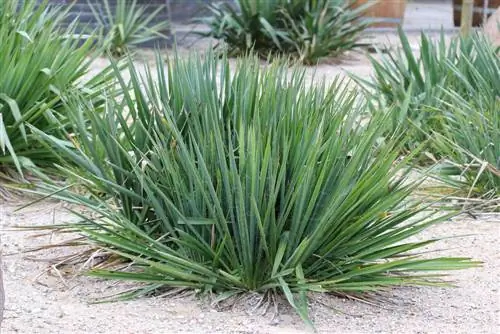
Tip:
The plant does not have to move to its winter quarters immediately when the heating season begins. However, you should then spray them regularly with a water sprayer to counteract the dry heating air.
Under normal circumstances, from around mid-March you will significantly increase the amount of water when watering and start adding fertilizer again. The risk of illness is particularly high during wintering. This is especially the case if the yucca is in a location that is too warm. Then pests such as aphids and spider mites can spread on it. It is therefore particularly important to regularly check the yucca for pest infestation during the dormant phase. Brownish discoloration of the leaves or yellowing indicates that the humidity or light is too low. If this is the case, urgent action must be taken.
Yucca elephantipes throughout the year
Having the largest, lushest plant possible is probably the goal of most Yucca palm owners. The plant actually has what it takes to grow into a truly impressive, majestic appearance. In order for this to actually succeed, you have to meet their natural needs at every time of the year. And that also includes a change of location. A trip outdoors in particular often acts as a growth accelerator. But the winter rest phase is at least just as important. If the location changes over the seasons, this is the best guarantee for an impressive Yucca palm in your home.

